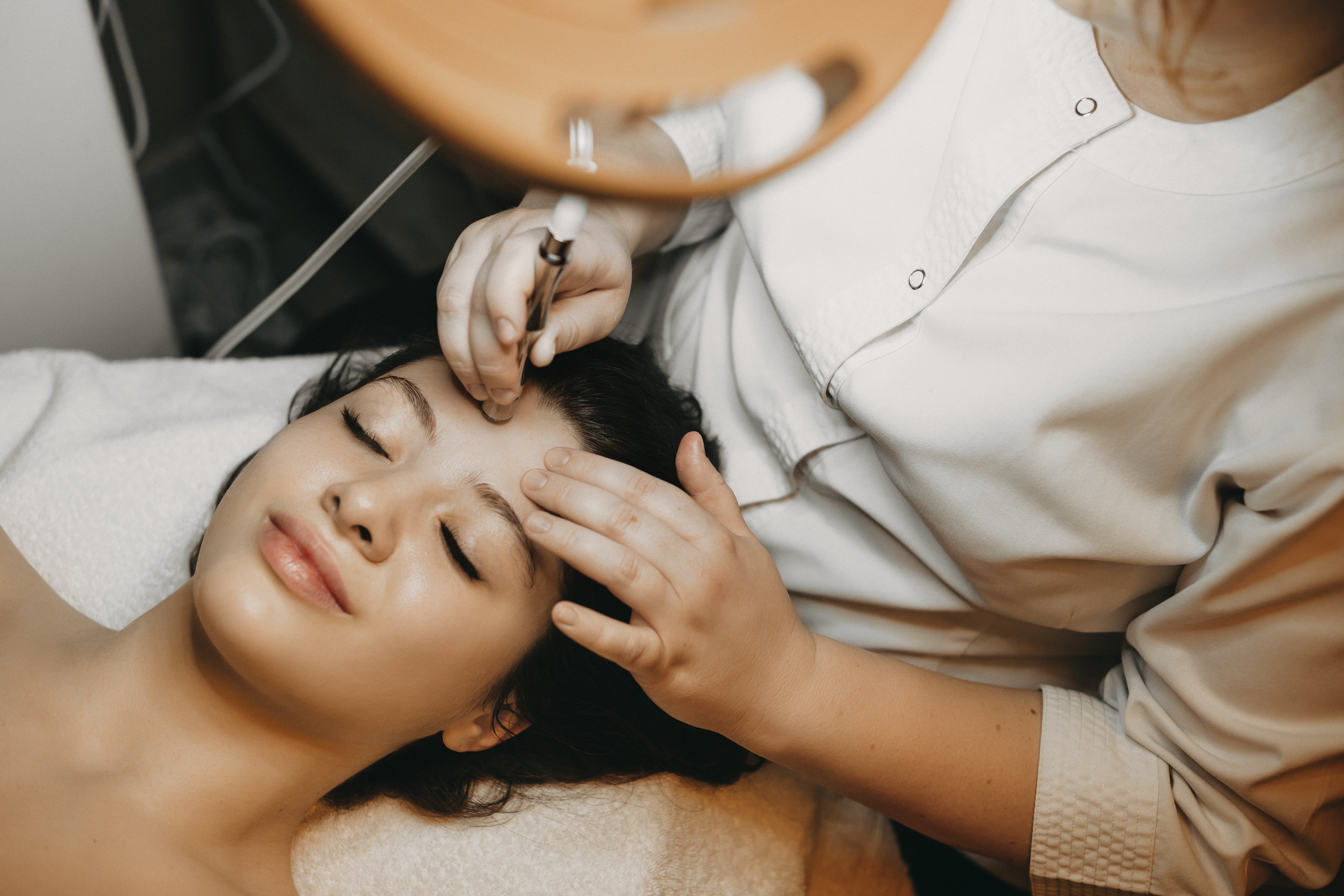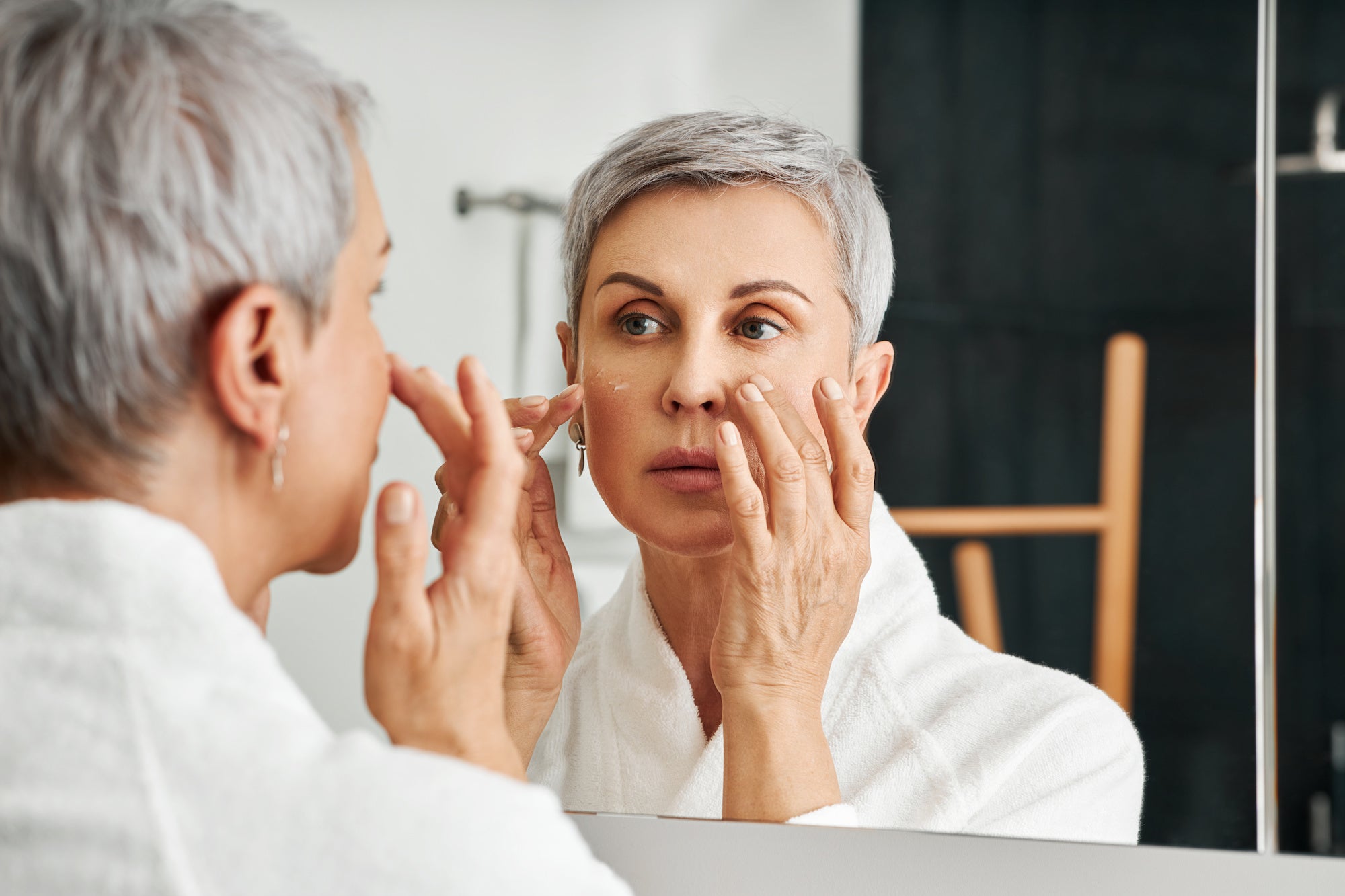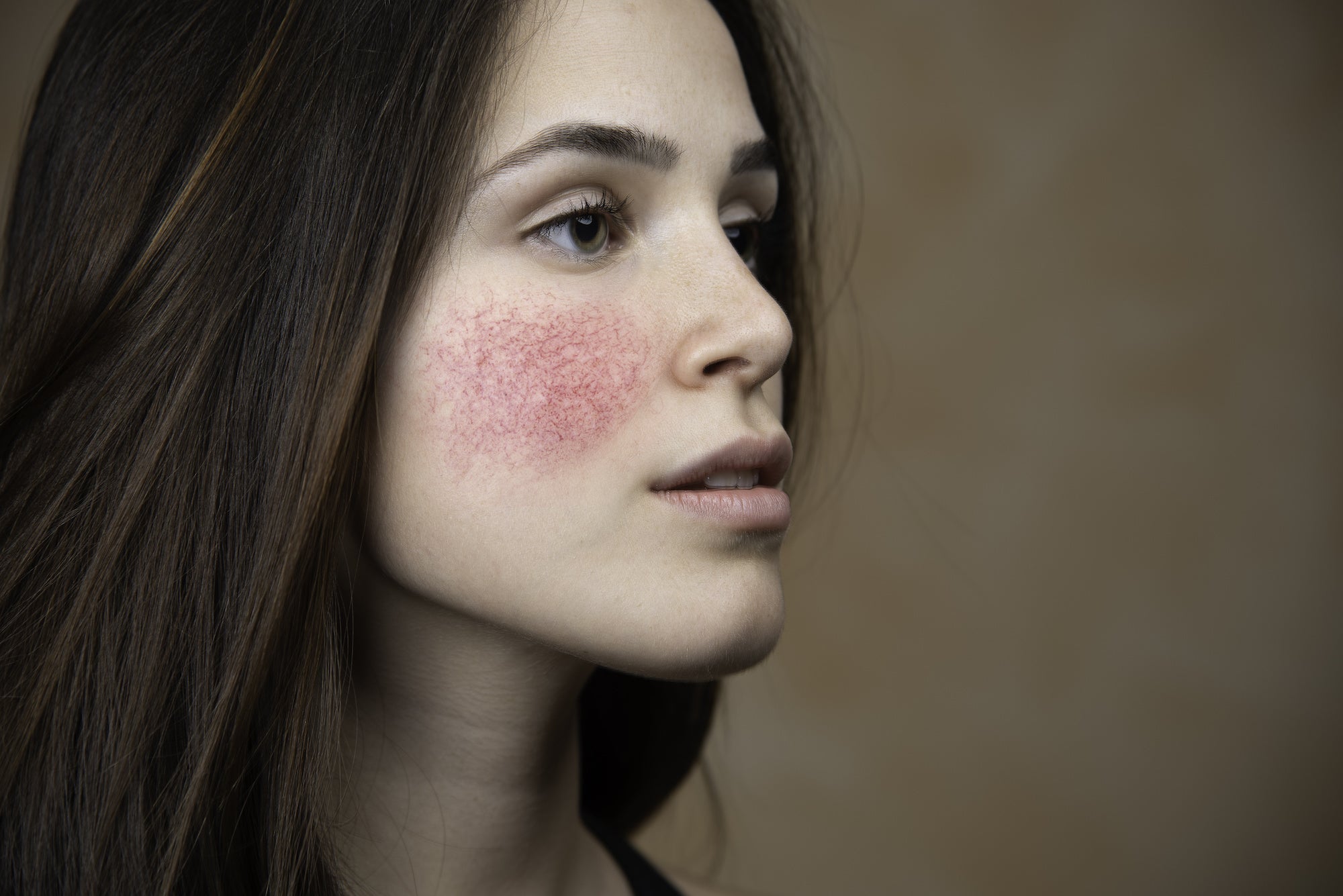
The Ultimate Guide to Microneedling
This powerful skin resurfacing treatment continues to gain popularity due to its stunning results and minimal discomfort.
So what is microneedling exactly, and are you a good candidate for treatment? You've come to the right place to learn these answers and more in our ultimate guide for microneedling.

What is Microneedling?
Microneedling is less invasive than Botox or laser treatments, but can have similar effects for restoring youthful skin.
Microneedling is a minimally invasive procedure using derma stamp pens or derma rollers with ultrafine needles that puncture the skin to encourage collagen and elastin production. As your skin heals from the microscopic wounds, the collagen produced forms new skin tissue.
Punctures from microneedling can also act as channels for enhanced delivery of topical skin care treatments like hyaluronic acid.
According to Oxygenetix Advisory Board Member, Beverly Hills MD Ava Shamban, "Surface scarring is eliminated and fine wrinkles are softened, if not erased. Simply put, it’s the only dermatology treatment that tightens your skin while also reducing your wrinkles at the same time."
Microneedling has verified claims to improve the appearance of acne scars, fine lines and wrinkles, sagging skin, rough texture, pore size, sun damage, and stretch marks.

Different Types of Microneedling
Results may vary depending on the type of microneedling you have done and how frequently.
Microneedling vs. Radiofrequency (RF) Microneedling
While microneedling promotes collagen and elastin production, working on upper layers of the epidermis, RF microneedling takes it to a new level. Radio frequency (RF) energy further stimulates the creation of growth factors in the skin. The addition of radiofrequency energy goes deep into the dermis and amplifies the production of proteins and enzymes like collagen, elastin, and hyaluronic acid.
Suneel Chilukuri, M.D told Dermatology Times, "Readers should note that there is a big difference between microneedling and radiofrequency (RF) microneedling. Depending on the area and what condition one is treating, practitioners may achieve more noticeable results by applying the RF microneedling."
Dr. Chilukuri goes on to explain that RF microneedling helps tighten the skin underneath, while microneedling just helps with the superficial changes we can see. The combination treatment works great for acne scarring and conditions needing deeper penetration.

Do at-home microneedling devices deliver the same results?
At-home microneedling dermarollers are frequently promoted by skincare enthusiasts. Although there are some benefits, you can expect the best outcome from a board certified practitioner.
When you use microneedling rollers at home, you will notice minor changes over time. It is recommended to avoid using your device more than once a week since your skin needs time to heal from each treatment. Microneedling at home can help your serums work deeper into your epidermis, resulting in a more youthful glow.
However, at-home devices can lead to more harm than good and won't provide the same effects as an in-office treatment from a board-certified dermatologist. Dr. Alster from the American Academy of Dermatology (AAD) warns, "at-home microneedling devices are difficult to clean and maintain, with needles that dull quickly. If these device do penetrate the skin they could do so in a way that leads to injury or infection, rather than rejuvenation."
If you want real results for things like stretch marks, acne scars, and deep wrinkling, going to a dermatologist for mircroneedling or RF microneedling is your best bet. They can take your results to the next level with high quality needles and safety precautions.

Would You Benefit From Microneedling?
Microneedling is a popular option largely due to the fact that it is safe for all skin tones. Dr. Alster from the AAD explains that since microneedling doesn't involve the delivery of heat, like lasers do for example, patients with a variety of skin tones can receive treatment without risk of pigmentation issues.
Most patients seek microneedling for smoother, tighter skin and a more youthful appearance, but if you have acne scarring you will greatly benefit as well.
If other treatments, like chemical peels, haven't cleared up your scars or softened your wrinkles, microneedling or microneedling RF treatment could be just what you need to finally see the results you want.
The downtime is minimal, making it a good choice for busy lifestyles and hectic schedules. Although you will most likely experience redness and slight burning for a few days, you can conceal safely with Oxygenetix post-procedure Hydro-Matrix and Oxygenating Foundation and get back to your life right away.
Who Should Avoid Microneedling?
Microneedling is not for everyone. If you have skin inflammation or infection you should not receive the treatment. This includes having active acne or cold sores at the time of your appointment. Microneedling can make acne worse, spreading acne causing bacteria from pustules and further irritating your sensitive skin.
If you are prone to cold sores, you can ask your physician whether prophylaxis therapy is appropriate prior to the procedure.
Word of caution: Microneedling is absolutely not appropriate for people who have used Accutane in the last 90 days, have open wounds, have had skin radiation therapy in the last year, are struggling with any kind of abnormal skin disease, are pregnant, and have a history of keloid or hypertrophic scarring.

Preparing For Your Microneedling Treatment
To prepare for your microneedling treatment, your dermatologist will give you the best instructions to follow, but here are some basic tips from Plastic Surgery Now.
Avoid the sun. If you are overexposed and get a sunburn prior to microneedling you will be asked to reschedule your appointment. Don't get microneedling done right before a vacation as you will want to stay out of the sun afterwards as well.
As a general rule, allow 48 hours after self-tanning lotions or sprays. Avoid using retinol products and other deep exfoliants 24 hours before treatment.
Basically baby your skin so the microneedling can work its magic revealing flawless skin without infection or severe irritation.
The Microneedling Experience
To make you more comfortable before your microneedling procedure, you will be given a topical numbing agent for the treated area.
Your practitioner will cleanse and disinfect your skin of any makeup and debris. They may also work skincare products into the skin before and after needling.
Debbie Thomas, UK Oxygenetix Advisory Board Member, explains, "Our skin is a natural barrier so, usually, getting our active ingredients deep enough to receive the full benefit can prove difficult. During and straight after micro-needling we have an opportunity to work products like mesotherapy solutions into the skin, where they penetrate down through the micro-channels and are able to work much more effectively."
The procedure involves moving the microneedling device back and forth on your skin. It will deliver several dozen pricks about three millimeters deep into your skin. A microneedling session lasts about 20 to 30 minutes.
Ava Shamban recommends you have a minimum of three sessions for optimal results. Although you will notice immediate results from the first one, it takes more sessions and sometimes quarterly upkeep to really see lasting differences.

Post-Treatment Care
Depending on the desired result of your microneedling treatment, your practitioner may apply serums and solutions to your skin afterwards to take advantage of the opportunity to work them deeper into your skin.
Although microneedling is less invasive than other treatments, you may experience slight redness and swelling that feels almost like a sunburn on your newly compromised skin for 2 to 4 days. You may even notice slight bruising and tiny blood spots, but those shouldn't last longer than a day or two. Within a week you will have smoother, more radiant skin!
As with any cosmetic treatment, it is important to protect your skin from the sun afterwards. Also, avoid comedogenic skincare and makeup products which can cause infection.
Ask your dermatologist for safe alternatives such as Oxygenetix topicals. Oxygenetix Hydro-Matrix can be put on immediately post-treatment to cool the skin and protect the delicate barrier with hydration. You can then follow with Oxygenating Foundation, a breathable tinted camouflage that conceals redness while delivering skincare benefits.
Most makeup clogs pores and can cause premature aging. It is ideal to continue avoiding comedogenic cosmetics so you don't reverse the benefits from treatment. You can use Oxygenetix foundation everyday to keep your skin in optimal repair.
Sources:




Leave a comment
This site is protected by hCaptcha and the hCaptcha Privacy Policy and Terms of Service apply.